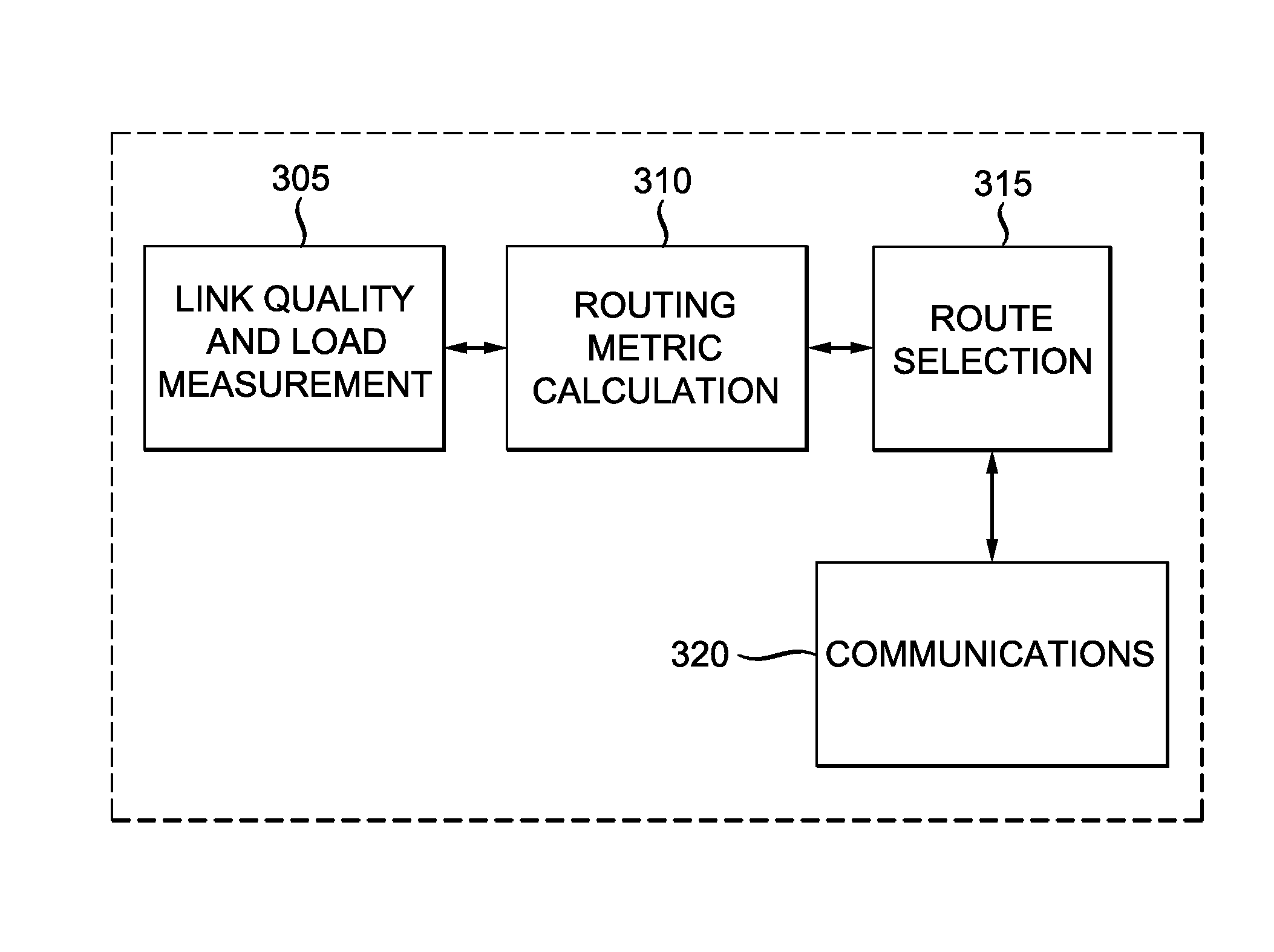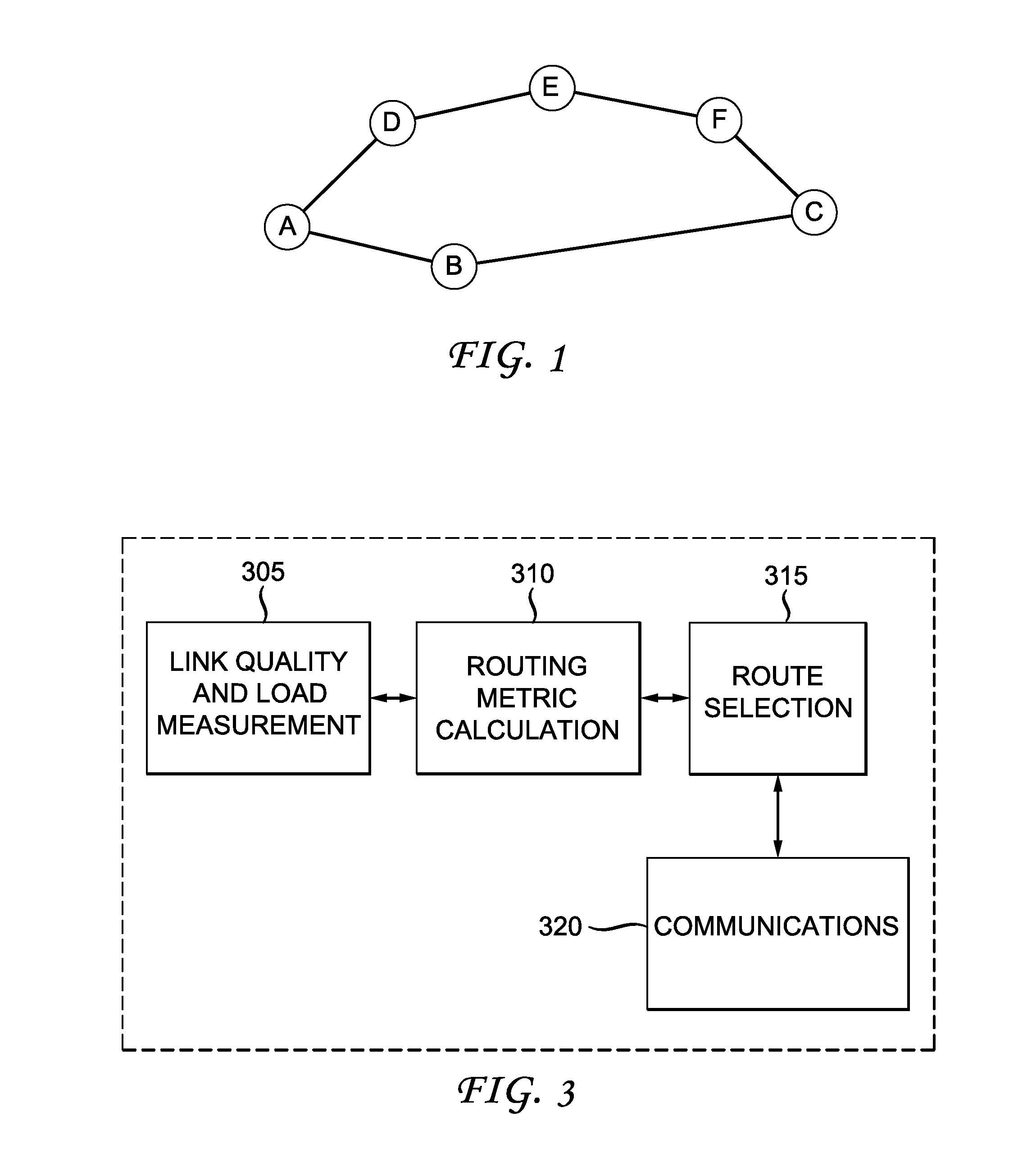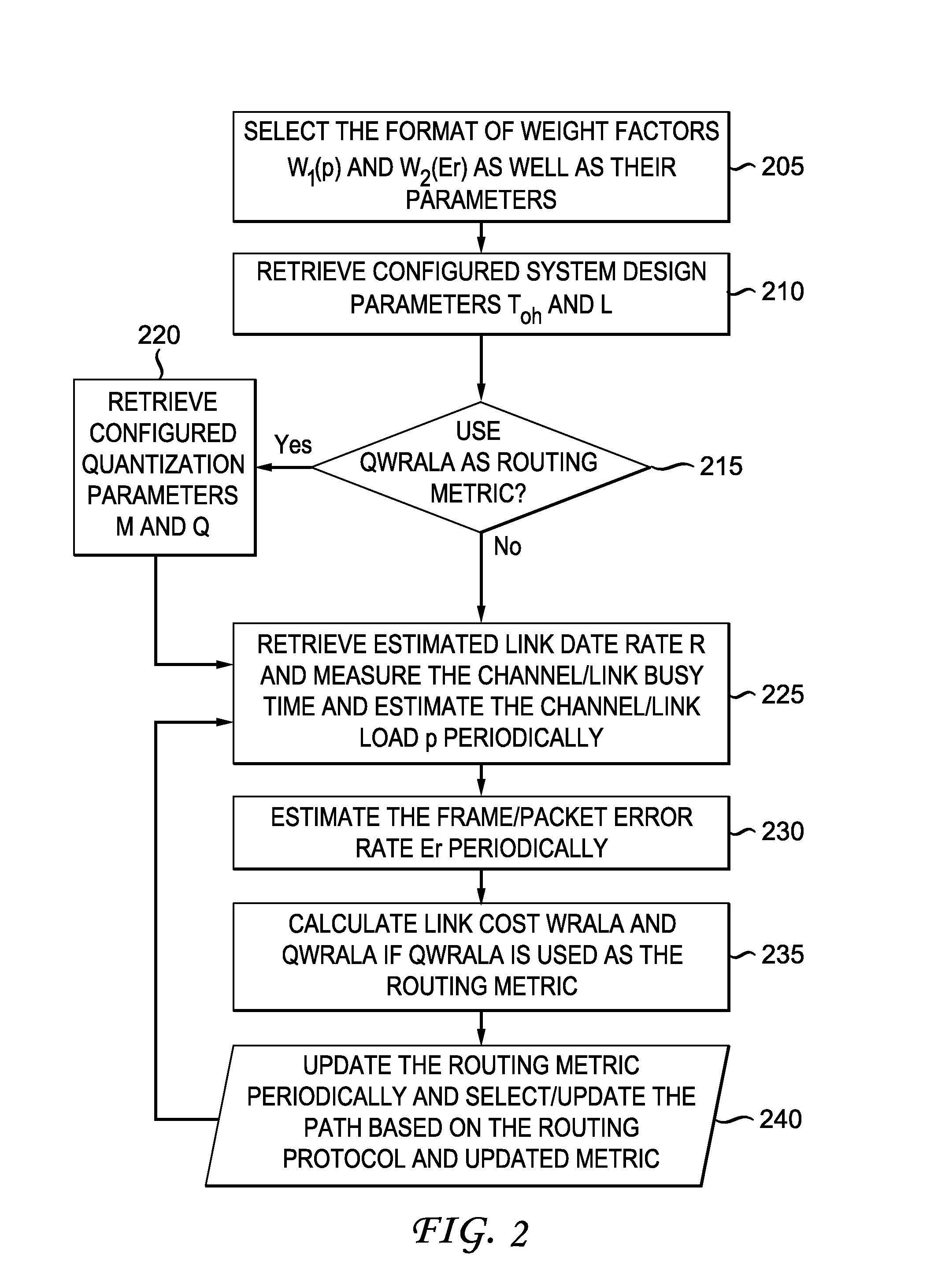Method for determining a route in a wireless mesh network using a metric based on radio and traffic load
a wireless mesh network and radio traffic load technology, applied in the field of wireless mesh networks, can solve the problems of poor performance of minimal hop count paths, poor quality of links along the path, alone optimal, etc., and achieve the effect of quick response and maintaining route stability
- Summary
- Abstract
- Description
- Claims
- Application Information
AI Technical Summary
Benefits of technology
Problems solved by technology
Method used
Image
Examples
Embodiment Construction
[0015]Let Toh denote the protocol overhead at the medium access control and physical layers, and L the test frame / packet size. Given a radio transmission system, Toh is a constant. For example, for IEEE 802.11a radio, Toh, can be set to be 185 μs. The size of test frame / packet L can be a pre-configured constant, for example, 8224 bits. L can also be, for example, an average frame / packet size or a maximum frame / packet size. Toh and L are configured in advance by a designer / administrator and stored in a configuration file in a memory / storage device / unit. Alternatively L and Toh can be configured via a local configuration mechanism or through a network management system during system installation or initialization. Furthermore, let R denote the link bit rate at which the node transmits a frame / packet of the standard size L under current channel conditions. The link bit rate depends on the local implementation of the link rate adaptation. Let Er denote the frame / packet error rate if the...
PUM
 Login to View More
Login to View More Abstract
Description
Claims
Application Information
 Login to View More
Login to View More - R&D
- Intellectual Property
- Life Sciences
- Materials
- Tech Scout
- Unparalleled Data Quality
- Higher Quality Content
- 60% Fewer Hallucinations
Browse by: Latest US Patents, China's latest patents, Technical Efficacy Thesaurus, Application Domain, Technology Topic, Popular Technical Reports.
© 2025 PatSnap. All rights reserved.Legal|Privacy policy|Modern Slavery Act Transparency Statement|Sitemap|About US| Contact US: help@patsnap.com



